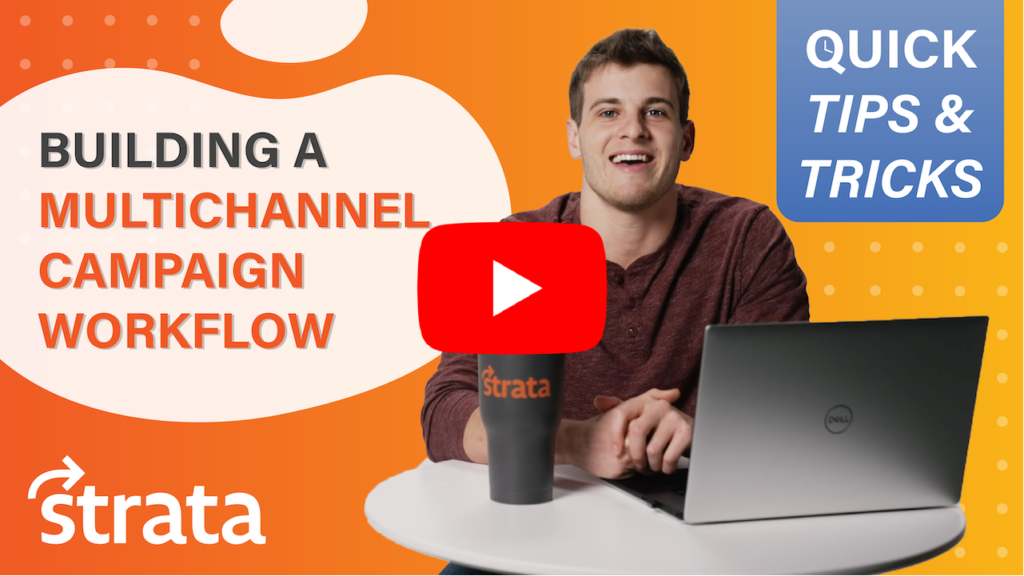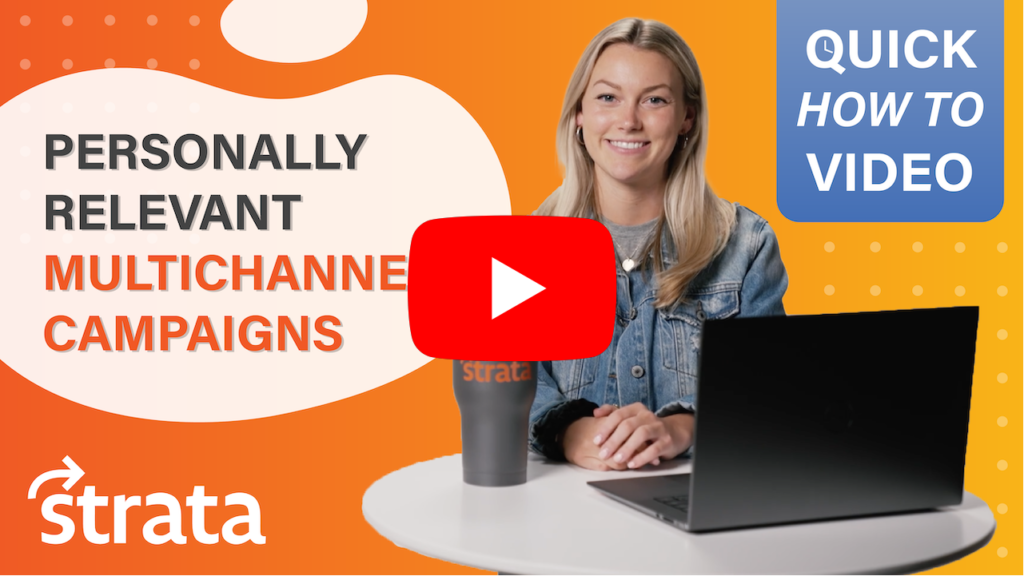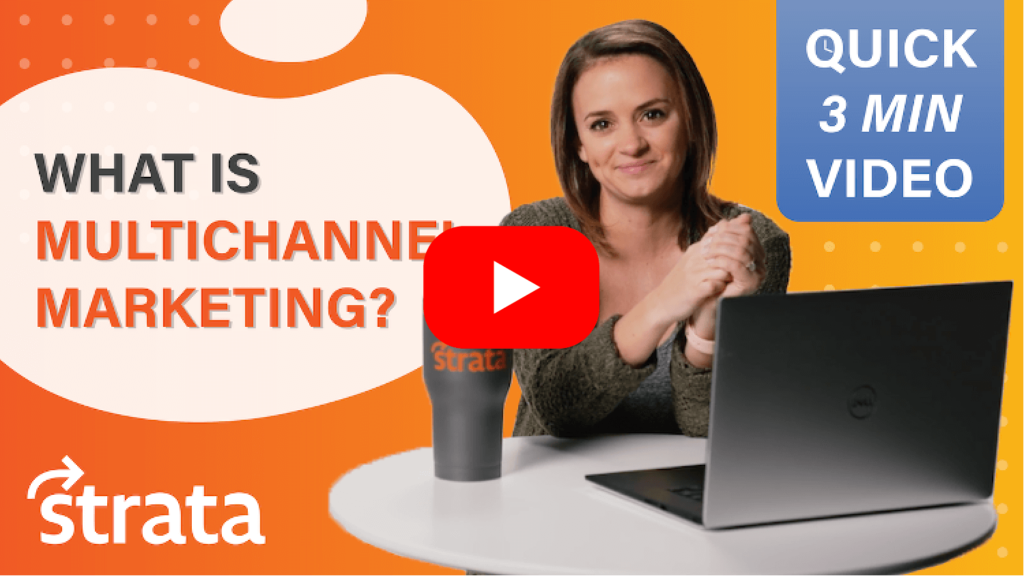A Strata YouTube Channel Original
Figuring out your multichannel campaign workflow can be difficult (at first). At its core, a workflow should be a living, breathing thing, and you most likely won’t come up with the optimal flow right from the get-go, and that’s alright, you’re not really supposed to. When building a workflow, your goal should be getting to a point where you’re tweaking it throughout the campaign, not reengineering it. That said, in our most recent YouTube video of our Multichannel Marketing series, we go over best practices for creating this flow, and the ways in which you can make it work well for you and your company.
Are All Workflows the Same?
The answer’s no. Look at the construction of your workflow as an iterative process. Something you sit down with, leave, come back to, leave for another cup of coffee, come back to and test out, make calculations for, leave, come back to, leave for more coffee, etc. Go in with the expectation of optimizing it a handful of times. Remember, it’s personalized to you and your company’s goals.
Its Importance
Having the most effective campaign from the get-go is one thing, but building a workflow and truly thinking through a theory for that workflow is another. It allows you to better test and evaluate your campaign’s goals. If you begin to see a disconnect between your campaign goals and what you currently have after constructing a workflow and calculating your multichannel KPIs, you have a problem. But, the good news is that you can work to solve it before spending money, and possibly disrupting your reputation. This is one of the main reasons workflows are important to have – so you can catch any kinks before launching your campaign.
First Steps
When starting to create your workflow, there are a lot of framework options you can build upon. The video that we’re referring to in this blog is for building a ‘base’ workflow, but, for information on how to tweak your ‘final’ workflow, check out this video when you find some time.
A commonly used workflow strategy formulation starts with defining the highest and lowest levels of the marketing funnel that you want to address. You can have as many ‘funnel buckets’ as you want, and they’ll vary based on your industry and business model. Here are some basic ones that can be used:
- Awareness
- Consideration
- Evaluation
- Purchase
We recommend laying these out as lanes in a flowchart. It helps to visualize the different stages of engagement for your campaign members.
To see next steps for building your multichannel workflow, click on the video below. You’ll hear our Director of R&D, Harrison, go through best practices and tips and tricks for getting yours set up. Or, if you’d like to discuss this concept with one of our multichannel experts, contact us today.
A Strata YouTube Channel Original
Creating a personally relevant multichannel campaign can be difficult without proper preparation and guidance. Luckily, in this blog, featuring our most recent YouTube video of our Multichannel Marketing series, we go over some marketing personalization statistics, how to create a personalized, cohesive, and seamlessly relevant journey across multiple channels, and ways to better know who your buyers are.
The key to starting is to understand who your audience is and their specific buyer journey. Once you collect this data, it’s time to personalize and make sure the content you’re putting in front of them is relevant.
Map Out Your Customer Journey
When creating the perfect multichannel campaign for your audience, take a look at who your buyers really are and then work backwards to figure out how they became a customer. What high-value acquisition channels did these customers use? Which customers have strong LTV (lifetime value)? Talk to your customer service team and your customers. Once you organize and map that out, you’ll have a much easier time figuring out where the problems are, and where objections are coming from. And finally, discover where customers dropped off in the funnel. Put all of this together, and you’ll have a clear look at the journey your customers take and how you can improve your connections with them.
Establish Your Data
When we say establish your data, we’re talking way more than first names and company names. While those are important – that’s not the personalization customers are looking for these days. You’ll want to start partnering with a company (or using software) that can help you gather info like real-time, on-site behavior, online and offline conversion history, geographic location, product affinities, and device activity. All of this will help you develop a strategy that’s consistent and relevant from one channel to the next.
Ultimately, there’s no one-size-fits-all personalized experience – that’s why customers crave it so much. To see what steps are next in establishing your personalized approach, click on the video below. You’ll hear our Marketing and Social Media Coordinator, Bridget, go through best practices. Or, if you’d like to discuss this concept with one of our multichannel experts, contact us today to get your next (or maybe even your first) multichannel campaign started.
A Look at Some of Our Favorite Customer-Focused Campaigns
Although we could write several blogs about all the great marketing campaigns that inspire and motivate us to be the best marketers possible and make the most effective material – in this blog, we’re looking at a few that we really admire because of how relatable and real they are. We’ll be breaking them down, thinking through what made them so successful, and in turn – helping you brainstorm your next campaign. Follow along as we dive into these customer-centric campaign leaders.
Apple’s #ShotoniPhone Campaign
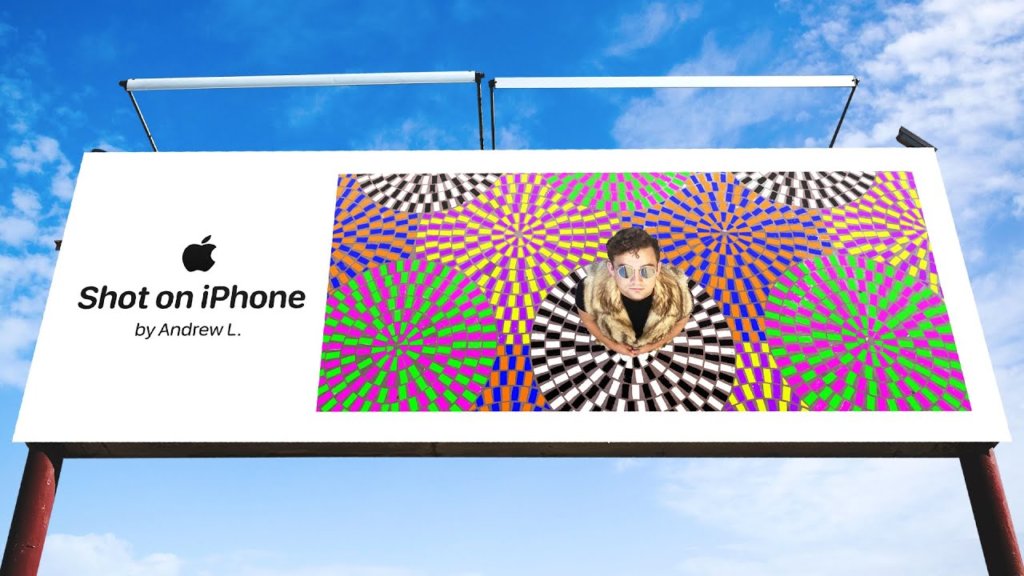
No matter where you’re located – you’ve likely seen this one around town. On billboards, buses, signs, or online. iPhone and Apple’s popularity is pretty known, but what we didn’t know when the iPhone first became popular was that it would eventually completely replace the digital camera. And that’s what this campaign shows; that you can take photos with your iPhone that are as beautiful as a camera that would cost you thousands. That’s great and all, but that alone would not convince people of today. So, why’s this campaign so successful? It gets real people involved. It’s relatable. The photos are not only from real Apple customers – but include their names. If someone wanted to, they could look up the name of the person in the bottom corner associated with taking the photo and learn more about who that person is. The best part? Not all of these people are photographers, showing that anyone could use the iPhone to take great photos. This tactic is pretty genius and builds trust – as no one would really care if it was simply a generic photo that easily could have been taken on a Canon. “According to various studies, over half (51%) of Americans trust user-generated content more than other information on a company website and claim that it influences what they buy and where they buy it from.”
Coors Light’s #CouldUseABeer Campaign
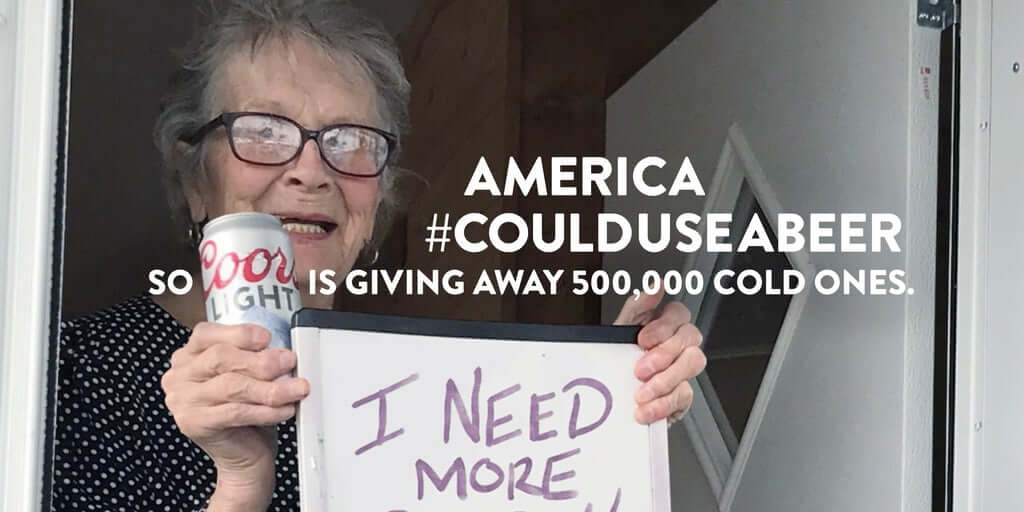
Another campaign that spoke to the general public and got them involved during a difficult time? Coors Light’s #CouldUseABeer. After a photo of a quarantined, 93-year-old woman asking for a beer went viral, Coors Light engaged with its audience by offering free six packs to anyone who was tweeted about (who – you guessed it, could use a beer). This tactic of giving away free items may seem pretty crazy, but it can go a long way. Although Coors Light gave away over 500,000 beers, their name was tweeted about again and again, which led them to trend, and boosted their reputation in a time of need.
American Apparel’s Direct Email Marketing
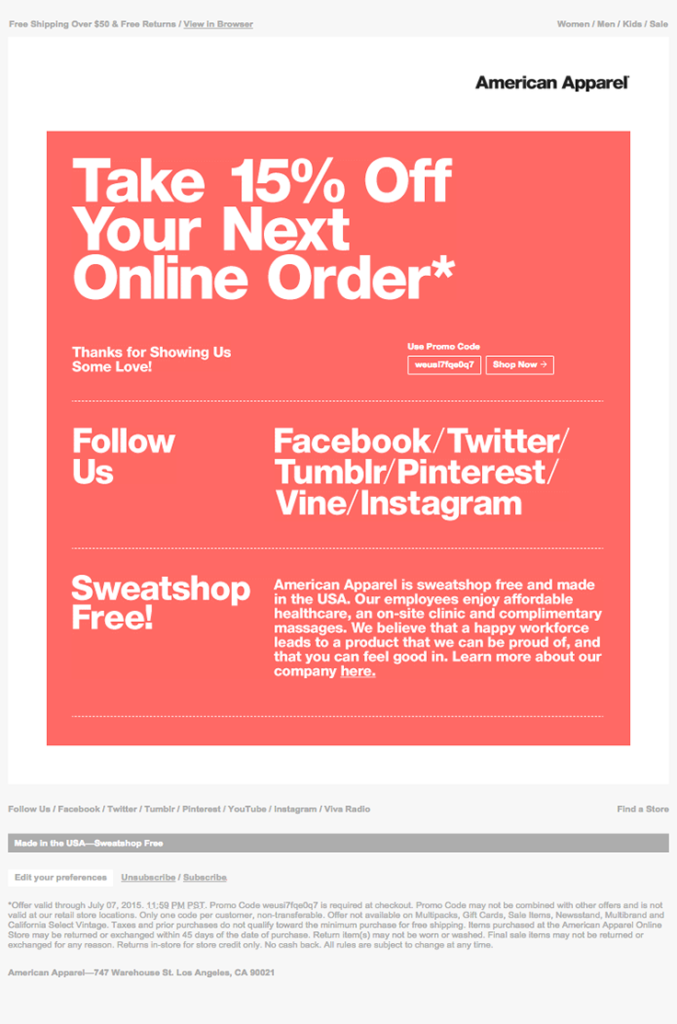
Known for being trendy and modern, American Apparel is no stranger to effective, up-to-date, customer-centric marketing. We’re specifically impressed with their to-the-point email marketing. No frills, no fluff – just what the customer wants (sales, discounts, and freebies). American Apparel always ensures that there’s no guesswork for their customers. Simple and sleek, their emails are call-to-action forward without being in-your-face.
Mercedes’ “Like You” Campaign

How do you relate a high-end brand to a broader audience of customers? Relate it to them, literally. Mercedes’ “Like You” campaign did just that. Called to several different types of audiences with phrases like, “Detail-obsessed, like you”, “Groundbreaking, like you”, “Original, like you” and “Curious, like you”. And not only was this phrasing compelling, but consistent. For the span of the campaign, potential customers could find the phrasing on billboards, signs, online ads, and on tv. The consistency was key, in that potential customers began to associate themselves with the brand and possibly even buy a Mercedes.
Airbnb’s Use of User Generated Content

Similar to Apple’s tactic, Airbnb uses the photos, videos, and feedback of its customers in its campaigns to promote beautifully classic or uniquely interesting places to stay. “Millennials spend 30% of their media time (5 hours/day) engaged with user-generated content (UGC). Coincidently, this is the same generation that drives Airbnb’s success in the sharing economy.” Airbnb keeps things personal and personalized by including its audience, which facilitates a happy and loyal community of customers.
Coca Cola’s Share a Coke Multichannel Campaign
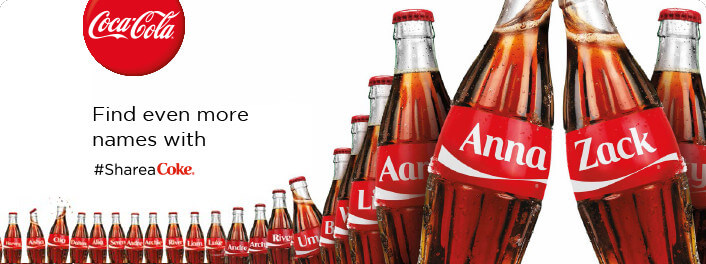
We all know this one. There’s nothing more personal than having your own name on a Coke bottle – which is exactly what Coca Cola did for its ongoing “Share a Coke” campaign. Whether you customize your bottle or simply find your name in store, you’re likely to share it with the world through text, email, on social, you name it (no pun intended)! And its rollout in 2011 sure worked in building brand awareness, boosting sales, and creating positive brand recognition, as “Young adult consumption increased significantly during the campaign, up by 7%, making 2011 the most successful summer ever. The campaign earned a total of 18,300,000-plus media impressions.”
Spotify’s #2020Wrapped Campaign
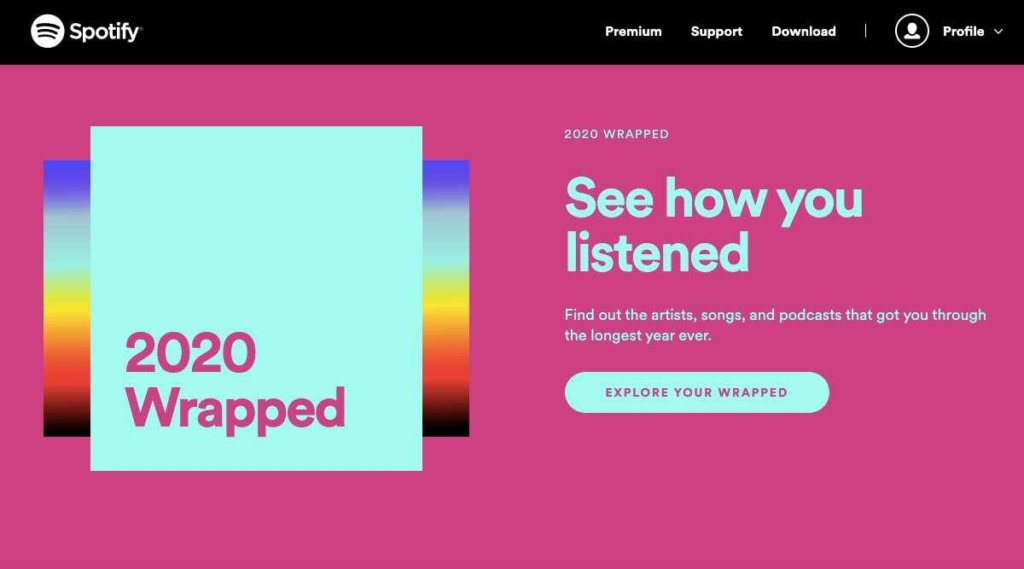
If you have any form of social media, you’ll likely remember this campaign flooding your feed, and maybe you even took part in it. At the end of 2020, Spotify allowed its customers to see their year of music with “2020 Wrapped”, which compiled their listening into a lovely array of photos and stats. Viewers loved seeing their personal data compiled into a nicely packaged marketing piece – and loved sharing their interests with others. Smart on Spotify’s end, because it not only gave them free marketing, but boosted their recognition.
So, What Have We Learned?
If you haven’t noticed, most of these campaigns share one key factor; relatability. How can you use relatability to create effective campaigns, too? Know your audience. Before even starting to brainstorm a campaign, make sure you’re fully aware of who, where, and when you’re targeting. And when you do start your campaign based off your findings, use that data and understanding to carefully craft consistent messaging that includes clear call-to-actions and personalized, catered content. Use hashtags, giveaways, QR codes, PURLs, BRCs, and more to engage with your audience and include them in your campaign. And, when and if appropriate, sprinkle in some humor.
Interested in making an impactful, relatable campaign that can help boost your company’s marketing efforts? Not sure exactly where to start? Look no further. Strata’s here to help. Contact us today to get the brainstorming started.
A Strata YouTube Channel Original
Throughout your workday, you might hear the term “Multichannel Marketing” being thrown around casually, and not have the slightest clue of what it’s referring to. That’s okay! We understand that it can sound like an intimidating subject. While up to 95% of marketers say they understand the importance of multichannel marketing for targeting, only 73% say they hjave a multichannel strategy set in place. At its core, Multichannel Marketing is a simple concept that can help your company’s overall marketing campaigns and execution excel. Read along as we walk you through this falsely intimidating marketing concept.
What is Multichannel Marketing?
In a nutshell, multichannel marketing is a strategy that uses a combination of indirect and direct communication channels. With these channels, you’re able to reach all of your clients, prospects, and customers with a multifaceted campaign that can do wonders for your company. Multichannel campaigns are all about distributing the right content to the right people at the right time. Whether it’s by direct mail, digital ads, social, websites, or brick and mortar stores, multichannel marketing can be anywhere and everywhere so that your customers can take action and respond to the channel of their choice. You basically open a window of endless communication possibilities, and let your customers respond on their own terms. There’s no forced communication, because the advertising experience is controlled by the pace of the customer.
98% of Americans switch between multiple devices in one day. If that statistic isn’t enough to make you believe in multichannel marketing’s power, then we don’t know what is. Traditional marketing tactics work, but multichannel marketing is unique because it meets customers where they are along their journey instead of at one single spot. For this reason, multichannel marketing is never a “one size fits all” approach. It requires marketing readiness on multiple channels, especially since 86% of shoppers regularly channel-hop across a minimum of two mediums.
Ready to Learn More?
If we’ve piqued your interest and you’re ready to enhance your multichannel marketing knowledge, check out our YouTube channel or click the video below. Our Marketing Manager, Caitlin, will give you a quick three-minute explanation on this ever-popular topic, or if you’d like to discuss this concept with one of our multichannel experts, contact us today to get your next (or maybe your first) multichannel campaign started.


